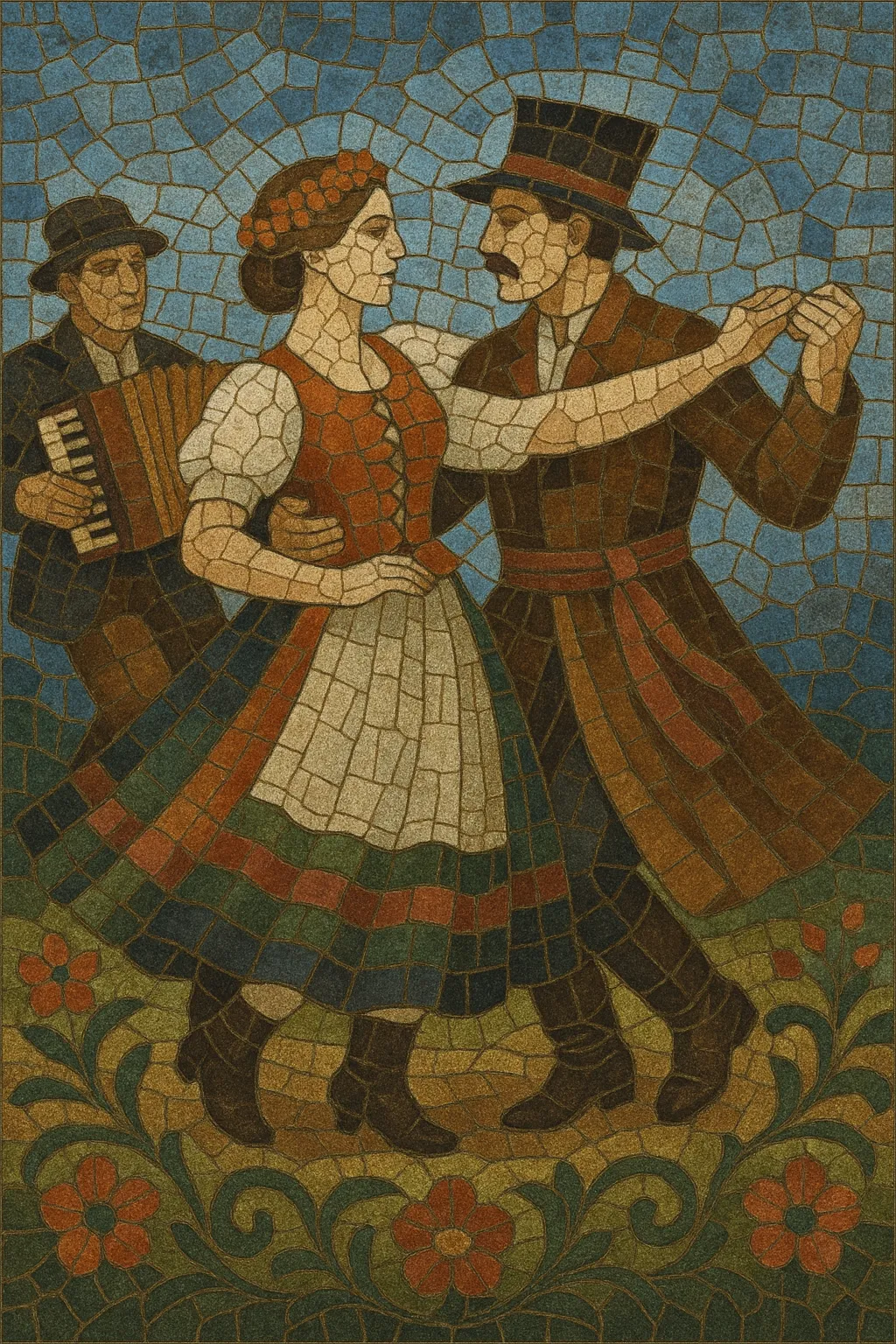The mazurka is a Polish folk dance and musical genre in triple meter, characterized by strong accents on the second or third beat and by distinctive dotted and syncopated rhythms. It originated in the Mazovia region of Poland and became both a social dance and an instrumental idiom.
In the 19th century the mazurka moved from village floors to European salons and concert halls, where composers—most famously Frédéric Chopin—transformed it into a refined art-music genre while preserving its rustic rhythmic markers and modal colorings. Today, the mazurka exists as a living folk dance tradition and as a classical piano form, emblematic of Polish musical identity.
The mazurka emerged in the Mazovia region of central Poland, where village musicians accompanied lively circle and couple dances in 3/4 time. Its hallmark was an off-center rhythmic feel—often emphasizing the second or third beat—combined with dotted figures, stomps, and call-and-response playing on fiddles, bagpipes, cymbalom, and later accordion.
In the early 1800s the dance spread beyond rural settings into Polish gentry salons, then rapidly across Europe. Its popularity coincided with a broader vogue for national dances. Frédéric Chopin’s piano mazurkas (from the 1830s onward) elevated the form to art music, retaining rustic accents, modal inflections (including Lydian-raised fourths), drones, and stylized stomps while exploring chromatic harmony and nuanced rubato.
As ballroom culture flourished, mazurka variants appeared in operas and ballets (e.g., Delibes’ Coppélia) and informed popular and parlor repertoires. Overseas, its triple-time dance feel left traces in several Atlantic and Latin genres (alongside waltz and polka), contributing rhythmic and phrase-structural models to emerging local styles.
In Poland, state folk ensembles such as Mazowsze and Śląsk codified stage versions of the mazurka, while village traditions continued in regional styles (related to the wider ‘mazur’ family, including oberek and kujawiak). In classical music, composers like Karol Szymanowski and Alexander Scriabin extended the piano mazurka idiom. Today, the form persists simultaneously as a participatory folk dance and as a concert genre, symbolizing Polish heritage.


